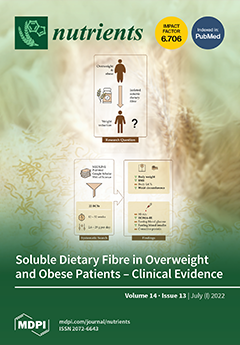Dried mushrooms might be a source of mineral components, which are indispensable for human health. The aim of this study was to determine the contents of calcium (Ca), magnesium (Mg), iron (Fe), zinc (Zn), copper (Cu), manganese (Mn), and selenium (Se) in dried
[...] Read more.
Dried mushrooms might be a source of mineral components, which are indispensable for human health. The aim of this study was to determine the contents of calcium (Ca), magnesium (Mg), iron (Fe), zinc (Zn), copper (Cu), manganese (Mn), and selenium (Se) in dried wild-grown mushrooms (
Boletus edulis and
Xerocomus badius) available for sale, and to evaluate these mushrooms’ contribution to the daily reference intake of the studied bioelements. The concentrations of mineral components in the mushroom samples were determined by the flame method (Ca, Mg, Fe, Zn, Cu, Mn) and the electrothermal (Se) atomic absorption spectrometry method. The mean Ca, Mg, Fe, Zn, Cu, Mn (in mg/kg), and Se concentrations (in µg/kg) in
B. edulis were 82.1, 964.1, 233.4, 97.9, 25.3, 22.1, and 6501.6, respectively, whereas in
X. badius: 67.5, 1060.2, 87.8, 197.2, 33.9, 19.8, and 282.4, respectively. We have shown that dried
B. edulis can be considered a source of Se. In the case of the other microelements, the tested mushrooms may serve only as additional supplements. Therefore, the studied species of mushrooms cannot be regarded as potential nutritional sources of the macroelements in question. Consumers should be properly informed about this, which should be guaranteed by appropriate legal regulations.
Full article






